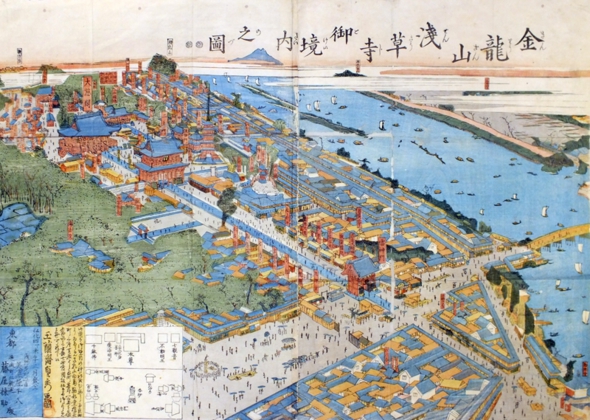
Overall View of Senso-ji Temple around 1847 (Minoya Edition)
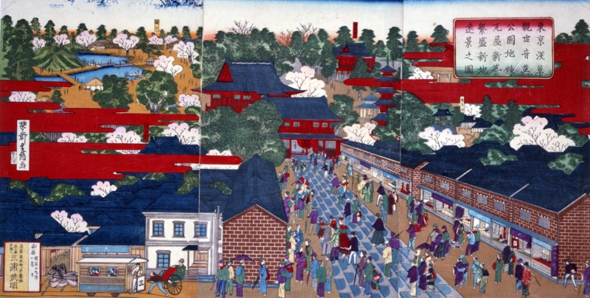
Overall View of Senso-ji Temple around 1886. Brick-built stores and people dressed in European style are depicted.
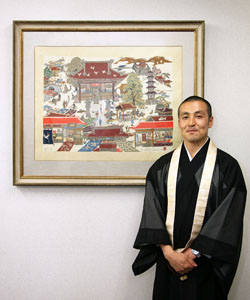
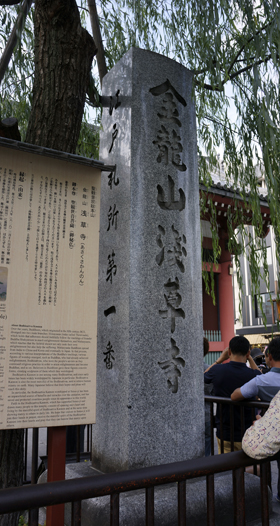
We talked with Shojun Shimizutani, the chief priest of Zenryu-in Temple, a branch temple of Kinryusan Senso-ji Temple. This interview was conducted in June 2013.
Q: It seems that a variety of stores have been set up in the precincts since the Edo Period. Can the present Nakamise shopping district be traced back to the Edo Period? Or has it been set up since the far past?
It is safe to say that the present Nakamise shopping district can be traced back to stalls that opened on the approach to the temple in the Edo Period. It is considered that the origin of the Nakamise shopping district was simple stalls opened around 1685. It is said that the temple permitted people to open stalls on condition that they cleaned the temple precincts and the approach to it. If it was the beginning of the Nakamise shopping district, the shopping district has continued to exist since the late 17th century, and has a long history. There were 20 tea stalls which also sold toys, candies and souvenirs, so those stalls were called "Nijukken Chaya," or 20 tea stalls. Some stalls hired "Kanbanmusume," or beautiful girls who attracts attention, and gained popularity.
Q: When I interviewed a staff of Toeizan Kan-eiji Temple before, I heard that Kan-eiji Temple has a close relationship with the Tokugawa family. Does Senso-ji Temple also have a close relationship with the Tokugawa family?
Definitely yes. Ieyasu Tokugawa entered Edo, and designated Senso-ji Temple as a prayer temple. It was decided that the Tokugawa family prayed for material benefit at Senso-ji Temple. It was because Tenkai, a Buddhist priest of the highest rank, who Ieyasu trusted, advised him to do so. The reasons were that Senso-ji Temple was in "Kimon," the unlucky direction to the northeast of Edo Castle, and that the temple was an old and famous temple of the Tendai sect of Buddhism. (continued in the right column)
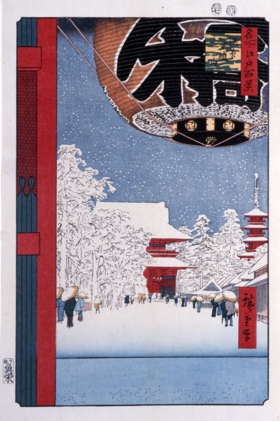
Snowy Senso-ji Temple ("One Hundred Famous Views of Edo" by Hiroshige Utagawa (around 1856-58))
Another reason was that the Minamoto family, including Yoritomo Minamoto, had firm faith in Senso-ji Temple. Ieyasu deeply respected Yoritomo who was a founder of the samurai government. This can be understood from a fact that Ieyasu called Chugo, a chief priest of Senso-ji Temple, to Edo Castle before the Battle of Sekigahara, and asked Chugo to offer the same prayer as the one Yoritomo did for his victory before he hunted down and killed the Heike clan. Ieyasu won the battle utterly. Since then, Senso-ji Temple was worshiped by the Tokugawa family. (continued in the next page)












